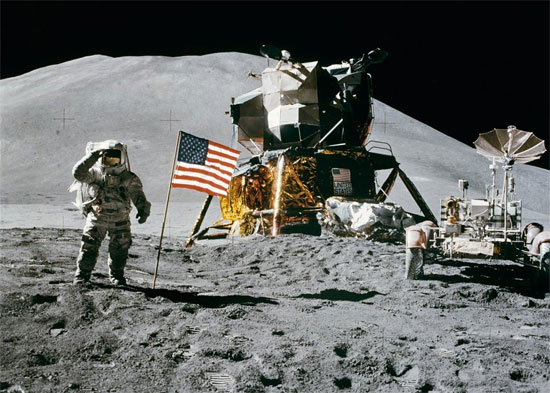NASA returned to the moon?
In these days, there are reports saying that the plan to conquer the universe by the US Space Agency (NASA) has changed. The 'Asteroid Hunt' campaign may be postponed, instead, the destination indirectly on the way to Mars once again is the moon.
In what direction will the US plan to conquer the universe by the crew? Since the delay of the Constellation program (2010), NASA has been working on a ' Flexible Path' that targets Mars. Before that happened (around 2040), NASA proposed conducting a series of increasingly complex campaigns.
The flight with the first crew will be EM-2 (Exploration Mission - 2), made before 2022. The mission of EM-2 is to "capture the asteroids" and return to orbit around the moon. (Previously, unmanned probes did this task). This mission was proposed by the White House in April this year.

The latest information from the Committee on Scientific Issues of the US House of Representatives shows that the 'asteroid capture' mission is not much concerned by American politicians. Instead, politicians offered to delay flights and seek other purposes for EM-2.
According to the initial information of the Commission on Scientific Issues, the first intermediate destination for NASA is the moon. Furthermore, NASA has a duty to map out long-term, medium-term and short-term plans for the mission to land on Mars.
In addition, the Scientific Affairs Committee expressed a wish to reduce NASA funding to $ 1 billion - that is, to $ 16.865 billion in fiscal year 2014 (and also in fiscal 2015). This reduction mainly affects solar system research activities (cut by about 650 million USD). The program of commercial space flights also reduced budget from 700-800 million USD.
Compared to the campaign for "hunting for asteroids" , the flight to the moon has a drawback that requires a large, heavy and expensive landing compartment. During the Constellation program, the work of designing the Altair landing compartment was done at a primitive level due to the lack of initial funding. Therefore, NASA launched the 'Flexible Road' tactic that is to make 'everywhere' flights without making expensive landing compartments.
- NASA returned to the moon
- Apollo 11 returned safely thanks to a boy
- The Chinese moon probe returned safely
- Official: Americans will return to the Moon
- NASA revealed the time of the first immigration settlement on the Moon
- Why haven't humans returned to the Moon?
- Hearing that Russia will go to the Moon to check, NASA rushes to prepare to send people to the Moon again
- NASA announced 8,400 photos of the process of exploring the Moon
- Latest photos of the moon
- NASA launched the Lunar Travel Law
- NASA built landing zones for the spacecraft near the moon
- NASA 'moon' twins
 Van Allen's belt and evidence that the Apollo 11 mission to the Moon was myth
Van Allen's belt and evidence that the Apollo 11 mission to the Moon was myth The levels of civilization in the universe (Kardashev scale)
The levels of civilization in the universe (Kardashev scale) Today Mars, the sun and the Earth are aligned
Today Mars, the sun and the Earth are aligned The Amazon owner announced a secret plan to build a space base for thousands of people
The Amazon owner announced a secret plan to build a space base for thousands of people 'Strange smell' detected on cargo spacecraft to ISS
'Strange smell' detected on cargo spacecraft to ISS  NASA selects partners to explore Saturn's moon Titan
NASA selects partners to explore Saturn's moon Titan  NASA releases video about the evolution of the universe after 12 years
NASA releases video about the evolution of the universe after 12 years  NASA opens the lid of the asteroid sample box that was stuck for months
NASA opens the lid of the asteroid sample box that was stuck for months  4 NASA scientists complete a year of 'trial living on Mars'
4 NASA scientists complete a year of 'trial living on Mars'  NASA Captures 'Ghost Light' That's Catching Us
NASA Captures 'Ghost Light' That's Catching Us 